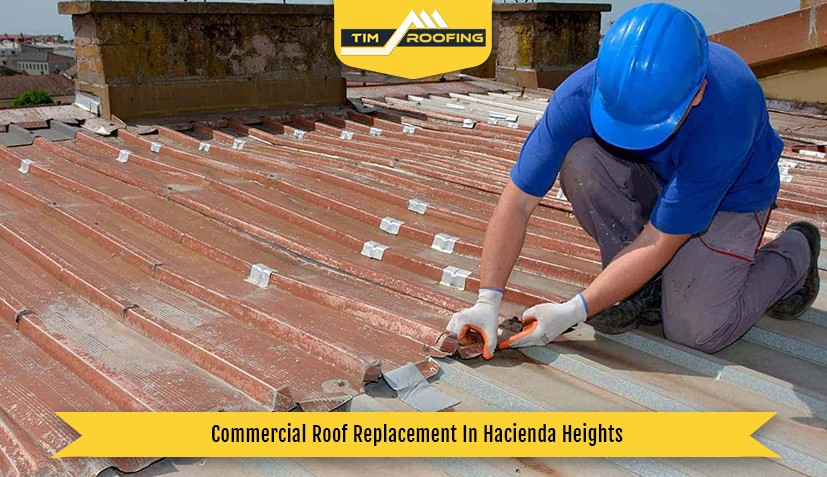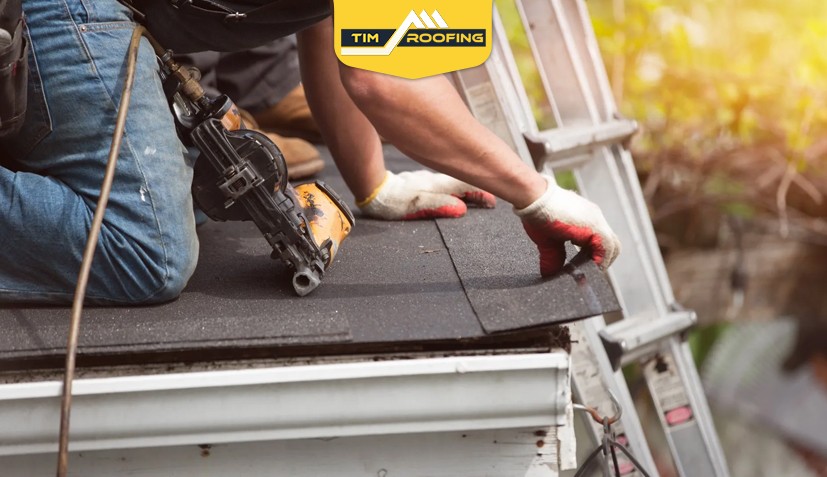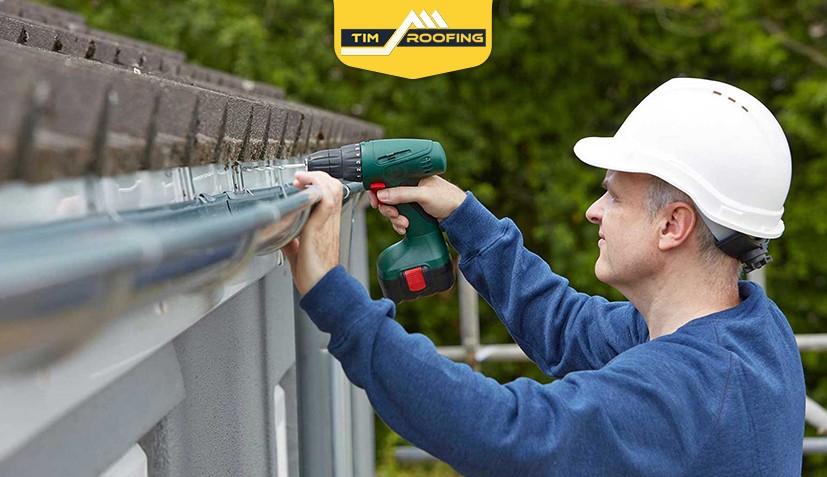Making Energy-Efficient Roof Replacement
If you’re looking to make energy-efficient upgrades to your roof in Hacienda Heights, there are several tips you can follow to achieve this goal.

- First, consider installing a reflective roof coating or cool roof material that reflects sunlight and reduces heat absorption. This can help keep your building cooler and lower your cooling costs during the hot summer months.
Here is a table that lists different types of roofing coatings for commercial roofs, their benefits, and their average cost:
| Roofing Coating | Benefits | Average Cost per Square Foot |
|---|---|---|
| Acrylic Coating | Reflects UV rays, prevents leaks, extends roof life, energy-efficient | $0.50-$1.50 |
| Silicone Coating | Highly resistant to UV rays, prevents leaks, extends roof life, easy to apply | $1.50-$3.00 |
| Polyurethane Coating | Provides superior protection against weather, UV rays, and chemical damage, highly durable | $2.50-$5.00 |
| Asphalt Emulsion Coating | Provides waterproofing, prevents rust and corrosion, easy to apply | $0.30-$0.80 |
| Butyl Rubber Coating | Highly flexible, able to withstand extreme temperatures, long-lasting | $3.50-$5.00 |
- Second, make sure your roof is properly insulated to prevent heat loss during the winter and improve energy efficiency.
- Third, consider installing a rooftop solar panel system to generate renewable energy and offset your electricity consumption.
Tim Roofing is an experienced contractor helping business owners with energy-efficient roofing upgrades for commercial roof replacement in Hacienda Heights. We would carefully analyze your existing roof and then recommend the best options for your specific needs and budget.
How We Help With Replacing the Coating on Your Roof?
Replacing the coating on a commercial roof is a complex process that requires careful planning and execution. Here are the general steps we follow to replace the coating during commercial roof replacement in Hacienda Heights

Inspection
The first step in replacing the coating on a commercial roof is to inspect the roof thoroughly. This includes checking for any damage to the roof, such as leaks, cracks, or holes. Any repairs needed should be made before the coating is applied. Schedule a consultation with Tim Roofing to get the perfect report.
Cleaning
The roof must be thoroughly cleaned before the new coating can be applied. This includes removing any dirt, debris, and loose or flaking coatings. A pressure washer may be used to clean the roof surface.
Primer
After cleaning, a primer must be applied to the roof surface. This will help the new coating adhere properly to the roof. The primer should be allowed to dry completely before the next step.
Coating
Once the primer is dry, the new coating can be applied. This is typically done using a roller or spray equipment. The coating should be applied evenly and allowed to dry completely before any additional coats are applied.
Inspection
After the new coating has been applied, the roof should be inspected again to ensure that it has been applied properly and that there are no defects or other issues
Maintenance
Finally, it is important to maintain the new coating by regularly inspecting the roof and making any necessary repairs. This will help ensure the longevity of the new coating and prevent any further damage to the roof.
Commercial Roof Replacement in Hacienda Heights – Systems & Techniques
There are several types of commercial roofing systems, each with its own unique characteristics and replacement process. Here are the most common types of commercial roofing systems and how we replace them during commercial roof replacement in Hacienda Heights

Built-Up Roofing (BUR)
Built-up roofing consists of multiple layers of roofing felt and asphalt, and sometimes a layer of gravel on top. To replace a BUR system, the following steps should be taken:
- Remove the old roofing, including the top layer of gravel if present.
- Inspect the roof deck and make necessary repairs.
- Install a new layer of roofing felt and hot-mop asphalt to create a new waterproof layer.
- Repeat this process until the desired number of layers have been installed.
- Install a top layer of gravel or another protective material to help protect the new roof from damage.
Modified Bitumen Roofing
Modified bitumen roofing consists of a single-ply membrane that is made from asphalt and rubber modifiers. The following steps should be taken to replace a modified bitumen roofing system:
- Remove the old roofing system.
- Check the roof deck for any damage and repair as necessary.
- Install a new layer of insulation and cover it with a new modified bitumen membrane.
- Secure the new membrane in place using adhesive or mechanical fasteners.
- Apply a protective coating or gravel layer to the top of the new membrane.
Single-Ply Roofing
Single-ply roofing systems consist of a single layer of material that is used to cover the entire roof. The most common types of single-ply roofing are TPO, PVC, and EPDM. The following steps should be taken to replace a single-ply roofing system
- Remove the existing membrane and any insulation beneath it.
- Repair any damages if necessary.
- Install a new layer of insulation and cover it with a new single-ply membrane.
- Secure the new membrane in place using adhesive or mechanical fasteners.
- Weld the seams of the new membrane together using a hot-air gun.
- Apply a protective coating or gravel layer to the top of the new membrane.
Metal Roofing
Metal roofing systems are made from various metals, including aluminum, steel, and copper. Here’s how we replace a metal roofing system:
- Remove the existing metal panels and any insulation beneath them.
- Inspect the roof deck and make any necessary repairs.
- Install a new layer of insulation and cover it with new metal panels.
- Secure the new metal panels in place using screws or other mechanical fasteners.
- Apply a protective coating or paint to the top of the new metal panels to help protect them from corrosion.

